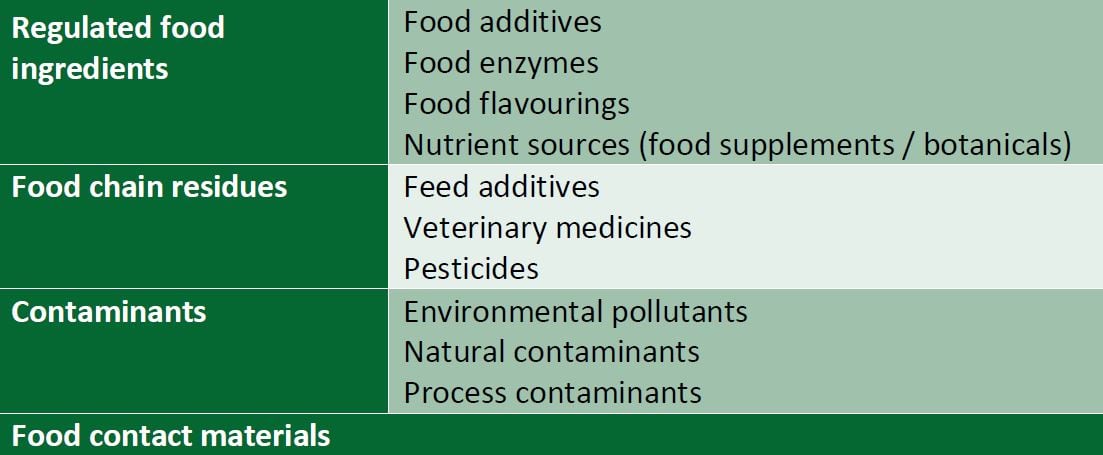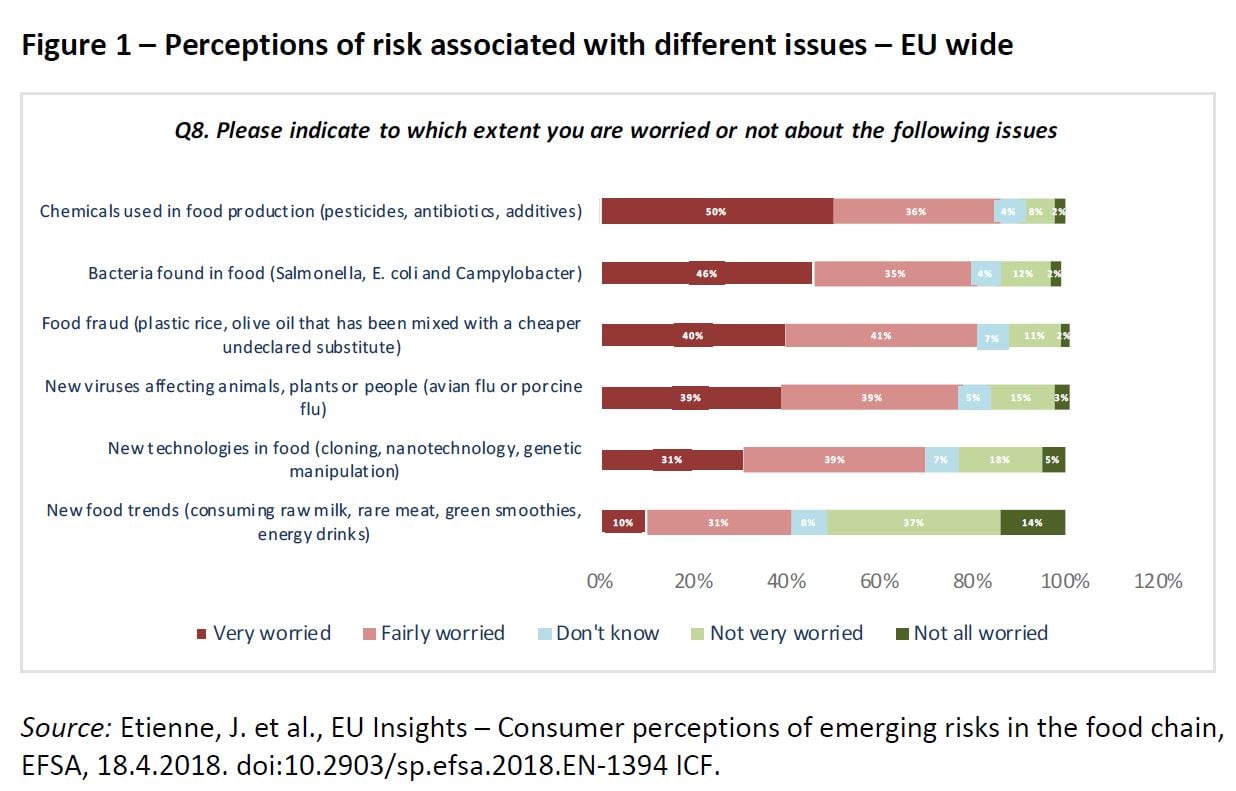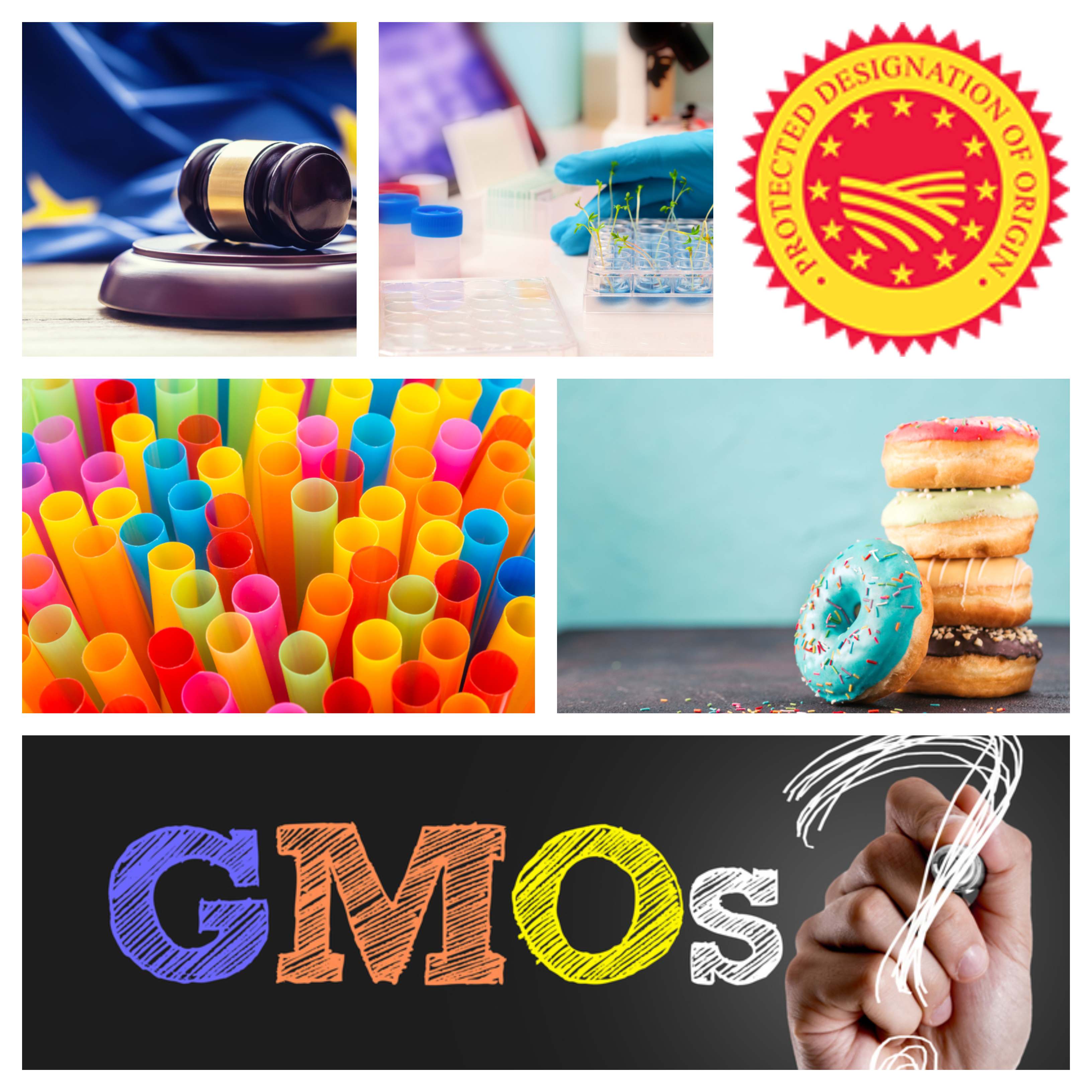The EU food safety system, part of EFSA (European Food Safety Authority) was created to protect human life and health against three hazards in food: physical, biological and chemical.
'Increasing demands'

But in a report by the European Court of Auditors (ECA) this month, it claims the European Union’s food safety system is “overstretched” and its ‘legal corpus’ governing chemicals in relation to food safety is extensive and fragmented.
Auditors emphasised EFSA is not capable of delivering on increasing demands, leading to delays.
Chemical hazards are substances which can potentially cause adverse health effects that either occur naturally or are added during food production or handling.
ECA says the EU has adopted numerous pieces of legislation including directives, regulations, decisions and agreements for each specific food area (food additives, flavourings, feed additives, pesticides) and overall this relates to about 8,000 chemical substances.
Examples include some additives, pesticides and certain metals. Residues of certain substances may remain and have an impact further down the supply chain. Even compliance with organic farming does not mean the presence of hazardous chemicals, such as contaminants, is excluded.
The effects of food containing chemicals at toxic levels are difficult to quantify. Studies of foodborne diseases contain fewer figures on illnesses and deaths due to chemical hazards than on foodborne infections. The harm caused by a chemical only becomes apparent in the longterm. Spontaneous complaints about a specific product on the market exceeding toxicity levels are rare.
“The current EU system faces a number of inconsistencies and challenges. This stretches EFSA’s capacity and may entail devoting resources to assessments requested by industry,” said Janusz Wojciechowski, ECA member responsible for the report.
The ECA audit focused on chemical hazards and asked if the EU food safety model was soundly based, and implemented to keep the products we consume in the EU safe from chemical hazards.
It found the model is soundly based and respected worldwide, but it is overstretched because the Commission and EU Member States do not have the capacity to implement it fully.
It claims this affects the proper functioning of parts of the system and the sustainability model as a whole. The legal framework is so extensive that public authorities alone find it difficult to fulfil all of the responsibilities placed upon them.
According to the report: ‘Chemical hazards in our food: EU food safety policy protects us but faces challenges’, it mentions a number of challenges including; the EU legal framework covering chemicals in feed, food, plants and animals remains a work in progress and has not yet achieved its full level of implementation and EFSA (European Food Safety Authority) suffers a backlog in its work.
It suggests in regard to pesticide residues in food for example, the Commission should explain what action it will take to maintain the same level of assurance for both EU produced and imported food while remaining compliant with WTO (World Trade Organization) rules.
'More guidance'

It also says the Commission should give Member States more guidance on the application of enforcement measures.
In a recent study by EFSA the most common concerns people had about food were pesticides, antibiotics and additives. It found 86% of respondents were fairly or very worried about the use of these substances in food.
Camille Perrin, senior food policy officer at BEUC, a European Consumer Organisation, which is an umbrella consumers' group, representing 43 independent national consumer organisations, said the Court of Auditors’ diagnosis is spot on.
“The EU food safety legislation, however stringent, is only as good as its implementation and enforcement,” she said.
“It has been more than 10 years since EFSA published its opinion on safe levels for vitamins and minerals in food supplements, yet the Commission is still to act upon it. Another example is the pending revision of the migration limits for lead and cadmium, two highly toxic heavy metals, from ceramic articles in contact with food, which was due by 1987.
“Chemicals top consumers’ concerns for risks associated with food. The next Commission must prioritise closing the regulatory gaps to improve consumer protection from harmful chemicals in their food.
“Member States need to allocate sufficient funding for food controls instead of cutting back on resourcing them to save money. It is good news some governments have come to realise it.
“While private assurance schemes and companies’ own checks can play a role in more efficient and risk-based official controls, they shall never replace independent oversight and controls by public authorities.”

Referring to a 2012 Ernst & Young survey, ECA noted applications covered more than 60% of EFSA’s output, while more than one third of these applications concern new products.
On several occasions, there were a very high number of substances to be tested and only a limited number of experts available to perform the tests, an ECA source said.
However, Dr Koni Grob, Kantonales Labor Zürich (KLZH), (Official Food Control Authority of the Canton of. Zurich) said he sees a significant discrepancy between the ECA report and an extract by Sarantis Michalopoulos, EURACTIV, (October 30, 2018): and said the main bottleneck is the implementation, primarily enforcement, less EFSA.
“I work for both, enforcement and EFSA, and primarily for food contact materials, where the situation is accentuated,” said Grob.
“At EFSA, the six months to respond to a request are almost always respected. More time would be desirable, but (in my opinion) primarily a better mandate from the Commission.
“The main problem is enforcement: there is no control for the large majority of the migrating substances (control is for at most 100 substances, but there might be in the order of 100,000).
“This is due to an inefficient control concept (control should be through the control of the documentation by industry, for which an efficient method still needs to be developed) and lacking measures in case of non-compliance.
Acrylamide
“A drastic case is acrylamide, for which the SCF/EFSA concluded more than 15 years ago, but little has been implemented. It is the carcinogen with the highest exposure to consumers.”
EU food safety policy challenges:
- EU food safety model is a point of reference around the world
- EU food safety model is based on a number of distinctive elements
- Imported food from non-EU countries has to meet EU standards
- Some elements of the legal provisions still require implementation or action
- The sustainability of the EU food safety model is being tested
- Limitations in the control system
He added an efficient ‘method’ comprises collection of documents from all over the world from the whole chain of manufacturers, registration of documents in a way to be accessible for European controls and check of the toxicological data and arguments, also in a harmonized manner.
“All this is not the job of EFSA and the Commission can support it, but basically it is within the remit of control authorities. Given the very little resources they have, the national authorities have to collaborate, and industry should get answers, which are agreed throughout Europe,” said Grob.
“We are grateful for this report as it confirms the resource constraints of EFSA, a concern highlighted for several years and addressed by the European Commission in its proposal to amend the EU General Food Law,” an EFSA spokesman said.
“The Court of Auditors’ report provides further context and clarity that can be used to inform the ongoing political discussions on this issue.”
As part of the review of the General Food Law, the European Commission proposed a significant budget increase of €62.5m per year for EFSA last year.
According to the EU food safety watchdog, the new budget will increase the overall quality of expertise and safeguard the future sustainability of EFSA’s operations and risk assessment in Europe.
On 11 December, the European Parliament approved in Strasbourg the mandate to start the trilogue with EU ministers over the Commission’s proposed new rules for EFSA.
FoodDrinkEurope, a Food industry confederation in the European Union, said it is looking at the ECA report and will share the outcomes and recommendations with its network of members.
The confederation was formed by 26 national food-related federations, including three observers, 25 EU sector associations, and 19 major food and drink companies.
“Food safety is of paramount importance to the industry, and we remain committed to ensuring all products meet the highest safety standards, from farm to fork, building on public-private collaboration,” said Rebeca Fernandez, director, Food Policy, Science and R&D, FoodDrinkEurope.
“Food and drink businesses have proactive, preventive measures in place for managing food safety built around HACCP, a systematic approach to identifying and controlling hazards (whether microbiological, chemical or physical) that could pose a threat to the production of safe food.
“FoodDrinkEurope agrees that, as the report states, the clear allocation of responsibilities between the private sector and public control authorities is an important factor of the soundness and efficacy of the EU system.
“We also support that better leverage of synergies between public and private control systems may alleviate the “overstretching” spotted by the report,” she added.




